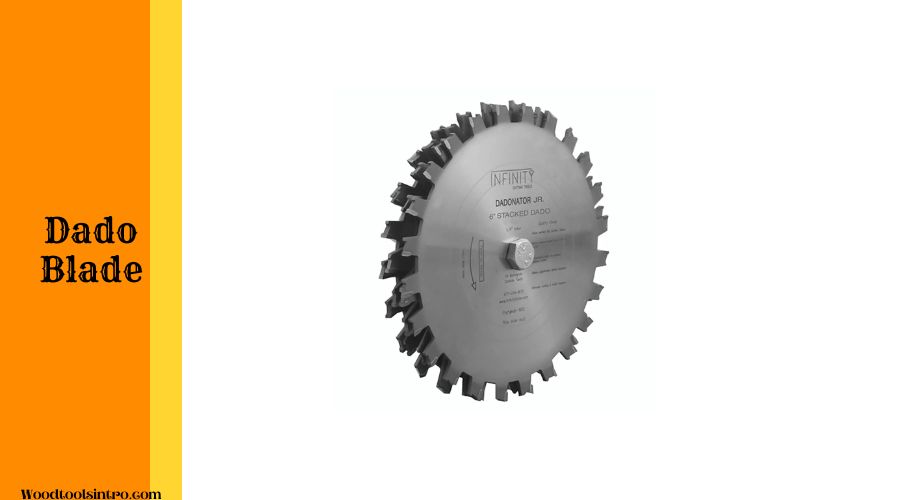Dado blades and routers are two different tools woodworkers use to cut slots into wood or make grooves. Although both are used for woodworking projects, they significantly differ in their construction, cutting process, etc.
In this write-up, we will be looking at the similarities and differences between dado blades and routers. We will also show you their pros and cons, as well as which option will be better for you.
So, let’s get right in.
Similarities Of Dado Blades & Routers
Though they have different shapes and processes, you will find many similarities between dado blades and routers.
Let’s see some of the similarities between these two tools
Perform Similar Task
Dado blades and routers can do the same tasks. You can cut grooves, create different shapes, and make slots in wood using both tools. They can be used in making dadoes and rabbets. So, both of them are handy tools for woodworking projects.
Need Power
Both dado blades and routers need electricity to run. You have to mount dado blades on table saws, and routers are independent power tools. But both of them need electricity to run. That’s why you will need access to electricity for these two tools.
Portable
Routers are portable tools that you can carry on to your job sites. Dado blades are also portable, but they need table saws to run. However, you can use portable table saws to mount dado blades. In that sense, both these woodworking tools are portable.
Similar Accessories
You can use similar types of accessories for dado blades and routers. For example, guide rails, edge guides, etc. can be mounted with both tools to get more accurate and precise cuts.
Differences Of Dado Blades & Routers
There are quite a few differences between dado blades and routers. As a woodworking professional or enthusiast, you should have knowledge of their differences. So, here are some major differences between dado blades and routers:
Construction
The most significant difference between the dado blade and router is their construction. Both these tools have completely different constructions.
Dado blades are just a set of blades with two circular outer blades and a few chipper blades sandwiched together on a single arbor. So, dado blades are attachments you must mount on table saws.
Router is a handheld independent tool that works separately. You do not have to mount it with anything else. However, a router will need the right bits to cut accurately.
Cutting Process
The cutting process and technique are also different for both tools. Dado blades have circular blades that cut through wood and create grooves, dadoes, and other joinery applications.
In contrast, routers do not have any blades. They cut through the wood using bits. You will get different decorative shapes from routers which are not effectively possible with dado blades.
Portability
Routers are more portable than dado blades in terms of functionality. Because routers are small power tools you can carry anywhere, you will just need electricity to cut wood using routers.
But that is not the case for dado blades. Although you can carry them quite easily, you will need a table saw to cut wood. So, they are not so portable as a whole.
Cutting Depth
You will be able to achieve more cutting depth from a dado blade compared to routers. That’s because dado blades are stationed on a table saw and can adjust the blade size. So, it will provide you with different sizes of slots.
But that is not the case with routers. You cannot adjust their blades because they do not have any. So, handheld routers can slip and mess with your cutting depth.
Precise Cutting
Dado blades are also known for providing more accurate and precise cutting than routers. Tables saws have guides that allow dado blades to cut wood accurately.
But since routers are handheld, they don’t have any guide. So, you will have to depend entirely on your skills.
Dado Blade & Router
Dado blades and routers have many advantages and disadvantages. While it’s your personal preference, knowing their pros and cons will help you make the right call.
Let’s see the pros and cons of both dado blades and routers.
Dado Blades

Pros
- Dado blades are less expensive than routers.
- They offer an in-depth clean-cut at a fast pace.
- You will get more accurate cuts.
- Perfect for large projects.
- They need less time to cut wood stocks.
Cons
- You can only use them with tables or other types of saws.
- Not very portable.
Router

Pros
- Routers are more versatile and handheld independent machines.
- You can easily carry them to your job site.
- They are easier to adjust compared to dado blades.
- Require less setup as they are a complete tool.
- You can create different shapes and designs using routers.
Cons
- Routers are more expensive than dado blades.
- They are challenging to manage while cutting wood.
Dado Blade vs Router – Which One Is Better For What Project & Why?
Both dado blades and routers are excellent woodworking tools, but they are best for a different set of tasks. Dado blades are best suited for large projects. If you have a table saw, a dado blade will be a better option to cut large grooves and slots in your wood stocks.
But if your project requires small grooves and slots, you can go for a router. You can also carry it to your job sites, making them suitable for various woodworking projects.
FAQs
You will have to choose a router bit based on the woodworking project. You will need ordinary straight bits with the smallest cutting edge for dado cuts.
Yes, you can use a dado blade to cut grooves and slots in wood. But some projects require a router and cannot be possible with a dado blade.
Final Words
Both dado blades and routers are handy and will provide you with precise slots, grooves, and various other shapes. Dado blades are a more affordable option offering accurate cuts, but routers are more versatile. I suggest you choose one based on your skill level and project.
Related Articles

I am Imtiaj Islam. I am a wood working enthusiast, having 6 years of experience in carpentry work. I have a BBA graduate degree from Chittagong College. I got vocational training on wood works from Korean Polytechnic out of the quest and zest he has for carpentry as well. I take several wood projects and keep testing different woodworking tools for comfortable and perfect work. I just love playing with woods and machines.
